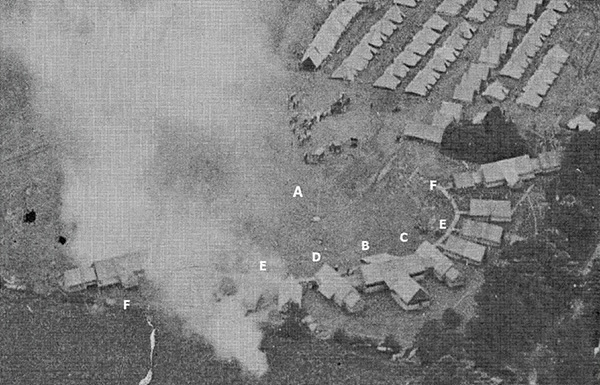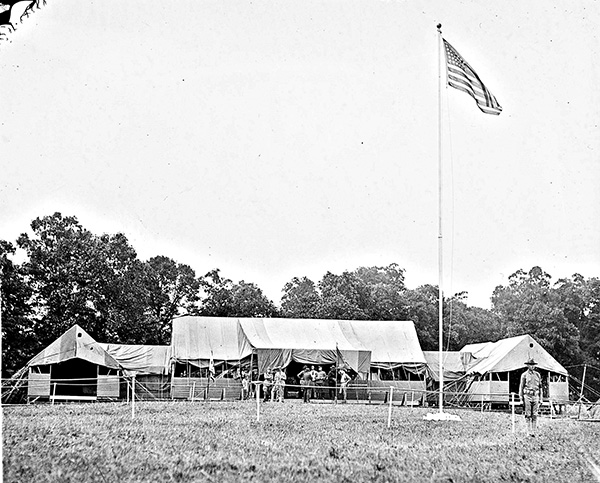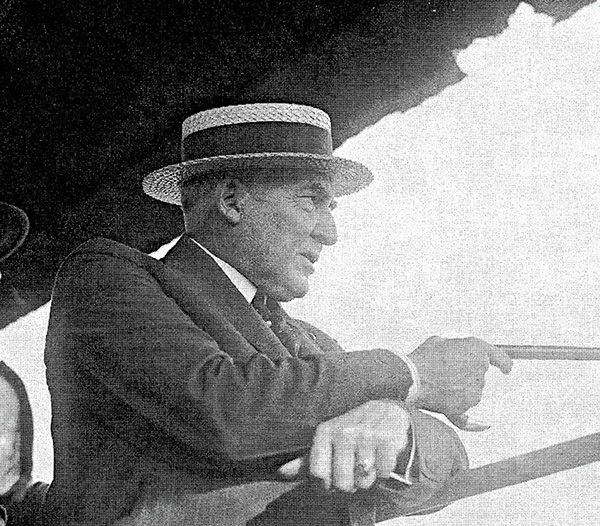President Harding’s 1922 Visit to Gettysburg
Richard D. L. Fulton
Based in part on The Last to Fall: The 1922 March, Battles, & Deaths of U.S. Marines at Gettysburg by Richard D. L. Fulton and James Rada, Jr.
The year was 1922, four years after the end of the First World War, when more than 5,000 Marines, along with their artillery, tanks, and dive bombers, descended upon Gettysburg—following their week-long trek from Quantico, Virginia, to the historic Civil War battlefield of 1863—for their annual summer maneuvers.
The ensuing activities by the Marines at Gettysburg involved a good deal more than routine drills and mock battles as part of their training. Many of the “battles” held from July 1 through July 3, especially on the field of “Pickett’s Charge,” were open to the public, and on July 4, the Marines would reenact Pickett’s Charge as if the Union and Confederate forces had the military equipage that had generally been available to the Marines in the wake of World War I.
Why Gettysburg? The Marines’ “invasion” of Gettysburg in 1922 traces its causation back to the 1918 Battle of Belleau Wood at the end of World War I as the result of the animosity that had developed between United States Army General John “Blackjack” Pershing, Commander of the American Expeditionary Force (AEF) in Europe during the war.
That animosity was more or less of Pershing’s own making. In need of more manpower to resist the German attempt to capture Paris, the general requested that the Marines, who were (and still are) a branch of the U.S. Navy, assist in bolstering the forces of the U.S. Army present. Thus, the Marines became part of the forces arrayed to join in the counterattack on the advancing Germans.
As preparations for the the counter-offensive took place, Pershing ordered that the media could not mention specific Army units in their reportage of the war, but that decree could have no effect on the Marines, who were merely “on loan” to the Army.
To make a long story short, this resulted in the media gravitating more to focusing on Marine participation, since individual units could be identified, giving news accounts a more personable appeal… so much so that when the attack on the Germans in Belleau Wood broke the German Line, the Marines would then receive the lion’s share of the credit up to, and including, the Marines being billed on the front pages of American newspapers as being the heroes of Belleau Wood, in spite of heavy Army participation.
This “got under Pershing’s skin,” and then to add insult to injury, the French renamed it “Marine Wood.”
At the conclusion of the war, Pershing spearheaded an effort to have the Marines disbanded, and as his congressional support gained momentum, the existence of the Marine Corps was in serious jeopardy. Even President Woodrow Wilson supported the effort.
From the end of World War I, all the way up to the end of World War II, there were more than a dozen attempts to disband the Marine Corps, leading to Robert Coram writing, in Brute: The Life of Victor Krulak, U.S. Marine, “But when the Marines were not needed, there was an ongoing effort to abolish them or absorb them into the Army … It seemed that the hardest fighting the Marines ever did was fighting for the privilege of defending their country.”
To counter this assault on the Marines, Marine Major General John A. Lejeune and General Smedley D. Butler developed a plan to combine their corps summer maneuvers with public events to promote the corps and advance its popularity in the public eye over and above the popularity which it had achieved at the end of World War I.
This led them to the idea of holding their maneuvers on Civil War battlefields and combining those maneuvers with public reenactments of the various battles. Ultimately, there would be four of these annual events: the Wilderness in 1921; Gettysburg in 1922; New Market in 1923; and Antietam in 1924. Ironically, Pershing had previously dubbed the Battle of Belleau Wood as the “Gettysburg” of World War I.
Thus, over 5,500 Marines of the Fifth and Sixth Marine regiments set forth from their base at Quantico on June 19, thereby commencing on “the long march” which would take their column of troops, tanks, artillery, and supply vehicles through Bethesda, Gaithersburg, Ridgeville, Frederick, and Thurmont, camping for the night in each of those towns before commencing with the final leg of their trek through Emmitsburg to the Gettysburg battlefield (which they reached on June 26).
The Gettysburg encampment, which was established on the Codori Farm, was dubbed Camp Harding, so named for President Warren Harding, who also happened to be pro-Marine, as opposed to his predecessor, President Wilson. The Gettysburg encampment was estimated to have been approximately 100 acres in size.
The Marines would have some very special observers for their July 1 battle reenactment, including President Harding and First Lady Florence Harding, along with White House staff members and numerous military figures, including General Pershing (who had been lobbying for four years to disband the Marine Corps).
Since Harding and his entourage intended to camp with the troops at Gettysburg, the Marines created a canvas compound that would come to be known as the “Canvas White House.”
Work on the canvas structure was initiated in Quantico when Marine engineers created and assembled the frame of the entire proposed presidential compound, which, upon its completion, was disassembled and shipped to Gettysburg by rail, and then transported by trucks to the battlefield where it was then reassembled on the Codori Farm, located along West Confederate Avenue, just north of the North Carolina Monument.
The compound consisted of 11 canvas and wood structures (encompassing a total of 16 rooms and 6 bathrooms), with walls and ceilings covered with plasterboard.
All the tentage was provided with wooden plank floors and all were fronted onto a plank walkway leading from one end of the compound to the other.
The canvas and wood complex consisted of a central 40-foot by 25-foot reception room. Attached to the southern face of the reception room was President and First Lady Harding’s personal quarters, followed by three tents for male guests, and one tent for female guests.
Attached to the northern face of the room was Presidential Secretary George Christian’s quarters, also then followed by three more tents for male guests and one more tent for female guests.
The completed Canvas White House compound was some 400-feet in length and 175-feet in width.
Lastly, the entire compound was lit with electricity provided by on-site generators, and water was provided by “many miles of pipeline” the Marines had installed to tie the encampment into the Gettysburg water supply, allowing the compound to have hot and cold running water in the compounds’ respective bathrooms. Radio communications was set up by the Signal Corps. Six porcelain bathtubs arrived, strapped to the bellies of six Martin MBT twin-engine torpedo bombers.
The president and his entourage left the actual White House and arrived on the Cumberland Township battlefield on July 1 and entered West Confederate Avenue, unloading the vehicles at the Canvas White House where they were met with a 21-gun artillery salute, which was preceded by a half-hour artillery barrage, representing the commencement of the charge—the barrage reportedly having been heard as far away as Hanover.
Then, after settling into the compound, the president and members of his entourage watched the ensuing battle from a no-longer existing observation tower that had stood in 1922 in Ziegler’s Grove, along with Colonel E.B. Cope, Superintendent of the Gettysburg National Battlefield Park and a Union Veteran of the 1863 Battle of Gettysburg.
Retiring to the compound after the battle, Harding and much of his entourage spent the night in the camp and left on July 2. The Canvas White House, however, continued to serve as quarters for other guests and dignitaries through July 4.

CANVAS WHITE HOUSE COMPOUND: A — The Canvas White House Compound; B — President’s public reception room; C — President and First Lady Hardings’ quarters; D — Presidential Secretary George Christian’s quarters; E — Three tents on each side of the main tentage for male guests; F — One tent on each end of the compound for female guests.
Courtesy of the U.S. Marine Corps Historical Company, modified by R. Fulton

The not-yet finished Canvas White House as it appeared before July 1.

President Warren Harding watches the maneuvers from atop the Ziegler Grove observation tower.

